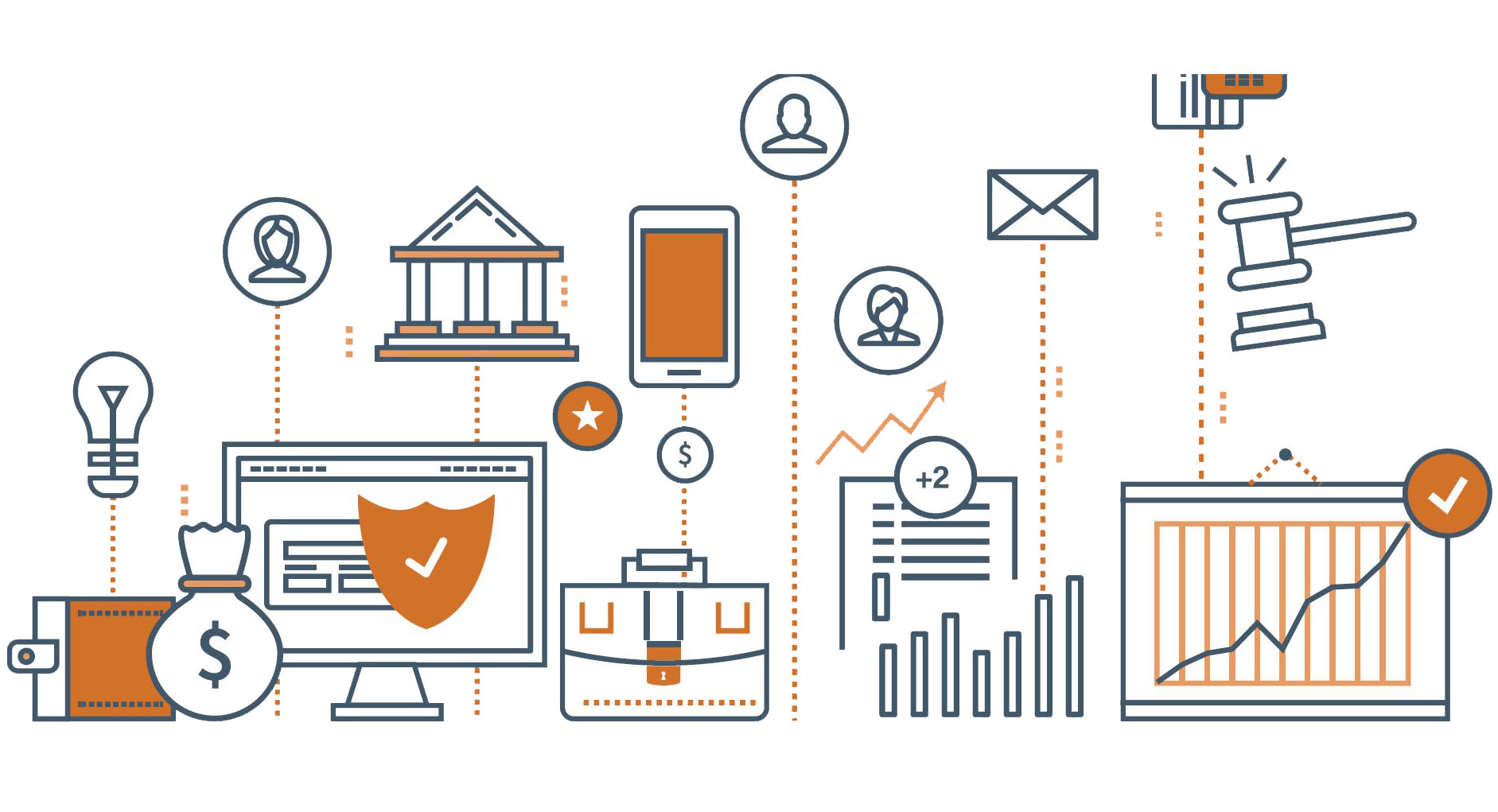
As one of the few current First Business Bank employees who has been with the company for over 20 years, Gary Fossum is a 35-year veteran in the retirement plan industry. His expertise and reputation for building mutual trust and respect make him not only a reliable expert, but also a mentor to many. Here, he answers a few key questions that anyone planning to retire should keep in mind along the way.
How Do You Plan A Happy Retirement?
The retirement planning industry tends to look at retirement primarily from a numbers perspective. Over the course of my career, I have tried to expand my knowledge base beyond the traditional approach, and I have learned there is a lot more to it than the finances. Years ago, I took a class to learn about the non-financial aspects of retirement. At the time, I was the youngest person in the room. My objective was to gain an understanding of the emotional side of retirement and to see things from other viewpoints. The class started with the presenter asking, “What are the things you’ll like most about your retirement life, and what will you like the least?” The answers to those questions fell into three areas, and the presenter described it as the Retirement Well-Being model. The three areas are:
- Prosperity or Finances — how and where we live, spending
- Health — strength, vitality, and energy
- Engagement/Happiness — the social system, sense of meaning, and purpose
The combination of all three of these elements leads to a rewarding retirement life. No amount of wealth will guarantee health or happiness. Likewise, if you don’t have some level of health, you probably will not be happy. No one element has more importance than the other, but every dimension has its fans and detractors. Throughout our lives, we tend to specialize in one of these areas at the expense of the other two. The financial world is closely aligned with prosperity. Health care and fitness professionals are most likely guided by health. Education and social service experts are interested in happiness. But what we need to do is work on all three and make them a part of our lives to some degree. Retirement is not like it was 30 or 40 years ago when people worked in a single career until they abruptly retired and never worked again a day in their lives. Today it is much more of a gradual process. We may consider ourselves retired but still work a little in some capacity, moving from a life that was centered around work with a little bit of leisure to a life that is centered on leisure with a little bit of work. It’s important to give some thought about staying engaged and happy in retirement. I often tell people to pick out a retirement role model who is 10 or 15 years older than you — someone who is leading the type of retirement you’d like to have — and talk with them about their retirement life.
How Do You Invest Successfully In A Company Retirement Plan?
Generally, when a person decides to enter a retirement plan, they need to assess three areas.
How much do you want to invest?
What percentage are you comfortable contributing and what percentage should you be contributing?
Do you want to invest in Roth or Traditional?
Both options are often available so you will decide if you want to contribute money pre-tax,post-tax through the Roth mechanism, or a combination of both.
How do you want to invest your money?
You answer should be based on a variety of factors — there’s no one right answer here. When you allocate those assets, it’s best to make decisions based on the following four factors:
-
- Age. How far away am I from using the money?
- Risk tolerance. What is my overall attitude toward volatility? How did or will I respond when the stock market declines significantly? Can I handle that?
- Level of experience. Am I a first-time investor? Have I been doing this a long time and understand how investments will behave?
- Overall financial position. Is this all I have or are there other assets to fall back on?
The investment decisions will most likely change over time. Early on, people are more concerned about growth and their account balances, but when you’re within earshot of retiring, you look at it differently. Retaining the value of the assets takes on a greater importance as you contemplate retirement. To be clear, some people continue a growth attitude for their entire lives, but the majority of people generally get more protective of what they have accumulated over the years.
How Do You Avoid Common Retirement Plan Mistakes?
 Not paying attention to your retirement account is a common mistake. For a long time, the industry has focused on your entire balance when you reach a certain point in life, but that’s changing today. Now we emphasize your income stream in retirement. Where are you headed? You’re trying to replace a level of your income. If plan participants pay attention to the tools and statements available to them, they will have a better idea where they’re headed from an income stream standpoint. An engaged participant will have fewer surprises at retirement and they will also have a better understanding of the risk/reward nature of investing. Another common mistake can be getting caught up in tax consequences and tax savings. Throughout a person’s life, if all they do is save pre-tax, they won’t have a lot of flexibility built into their situation. You have to pay tax on everything that you need to live on when you retire, and that may have adverse financial consequences at that time. Using Roth options throughout the years or after-tax savings vehicles allows for more flexibility in distribution options. This may help you manage your government benefits and costs more effectively.
Not paying attention to your retirement account is a common mistake. For a long time, the industry has focused on your entire balance when you reach a certain point in life, but that’s changing today. Now we emphasize your income stream in retirement. Where are you headed? You’re trying to replace a level of your income. If plan participants pay attention to the tools and statements available to them, they will have a better idea where they’re headed from an income stream standpoint. An engaged participant will have fewer surprises at retirement and they will also have a better understanding of the risk/reward nature of investing. Another common mistake can be getting caught up in tax consequences and tax savings. Throughout a person’s life, if all they do is save pre-tax, they won’t have a lot of flexibility built into their situation. You have to pay tax on everything that you need to live on when you retire, and that may have adverse financial consequences at that time. Using Roth options throughout the years or after-tax savings vehicles allows for more flexibility in distribution options. This may help you manage your government benefits and costs more effectively.
How Do You Save More In A Company Retirement Plan?
First, ensure you maximize any matching funds employers offer. Contribute at least up to the matching level to get that match. Next, keep in mind the participant level dollar limits set forth each year by the IRS. In 2020, those younger than age 50 can contribute up to $19,500 and those age 50 and above can contribute $25,000. A business owner or highly compensated employee can be subject to a different set of rules that limit participation based upon the participation of the remainder of the employees. It is important to have good engagement from employees. Additionally, a Safe Harbor plan design should be considered as it allows for an owner to be able to maximize their personal contribution.
How Do You Manage Your Own Company Retirement Plan?
There are generally a couple of different types of investors within a plan. The first is the group that is actively engaged in the investment process and wants to monitor their own investment options and make their own investment decisions. The other group is the “do it for me” category that wants another party to make these decisions on their behalf. Deciding which group you are in is a good starting point to select your strategy.
How Do You Access Your Company Retirement Plan When You Quit?
Learn about what your options are with respect to your plan, how quickly you can move money to a new plan, and investment differences between the alternatives under consideration. Also, you should take into consideration any outstanding loans you’ve taken from your current plan. Distribution options are becoming more important to consider as you look at retiring. Can you pull money straight from the company retirement plan or do you need to roll it over to an Individual Retirement Account (IRA)? Can you take it out monthly or do you have to take it out in lump sums?
How Do You Choose A Company Retirement Plan Provider?
Technology has somewhat leveled the playing field between vendors — most have very functional, user-friendly systems for participants.
Decision-makers at small and medium-sized businesses should really consider the services that vendors provide to their plan participants because that vendor often becomes the face of your plan for your company.
At First Business Bank, our plan sponsor clients know their employees aren’t reaching out to a 1-800 hotline for help — they’ve got someone to call right here. That service level can be difficult to gauge ahead of time, so talk to other business owners. Get some ideas about vendors and ask a lot of questions. Plan sponsors should be very cognizant of pricing models. Plans are delivered in a lot of ways in this industry, and sometimes the costs of operation are obvious and sometimes they aren’t. It should be a priority to understand and identify what services you’re getting for what price. Thirdly, from the fiduciary side, a lot of employers don’t want the responsibility of selecting investments, so make sure to select the right provider with a depth and strength of services. It’s important to understand the vendor’s process. The strength of the fiduciary can’t be underestimated. To help evaluate that, take a look at their level of experience and, again, get references from other organizations. Look at their fund lineups, their capital, and the financial strength of the fiduciary.





